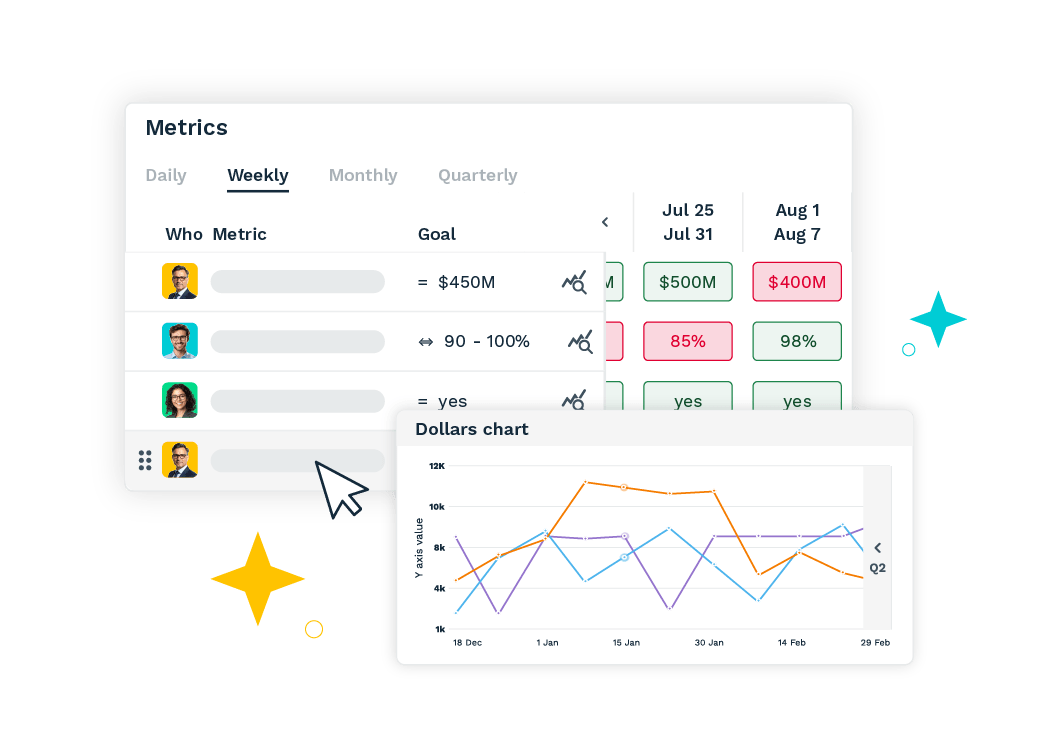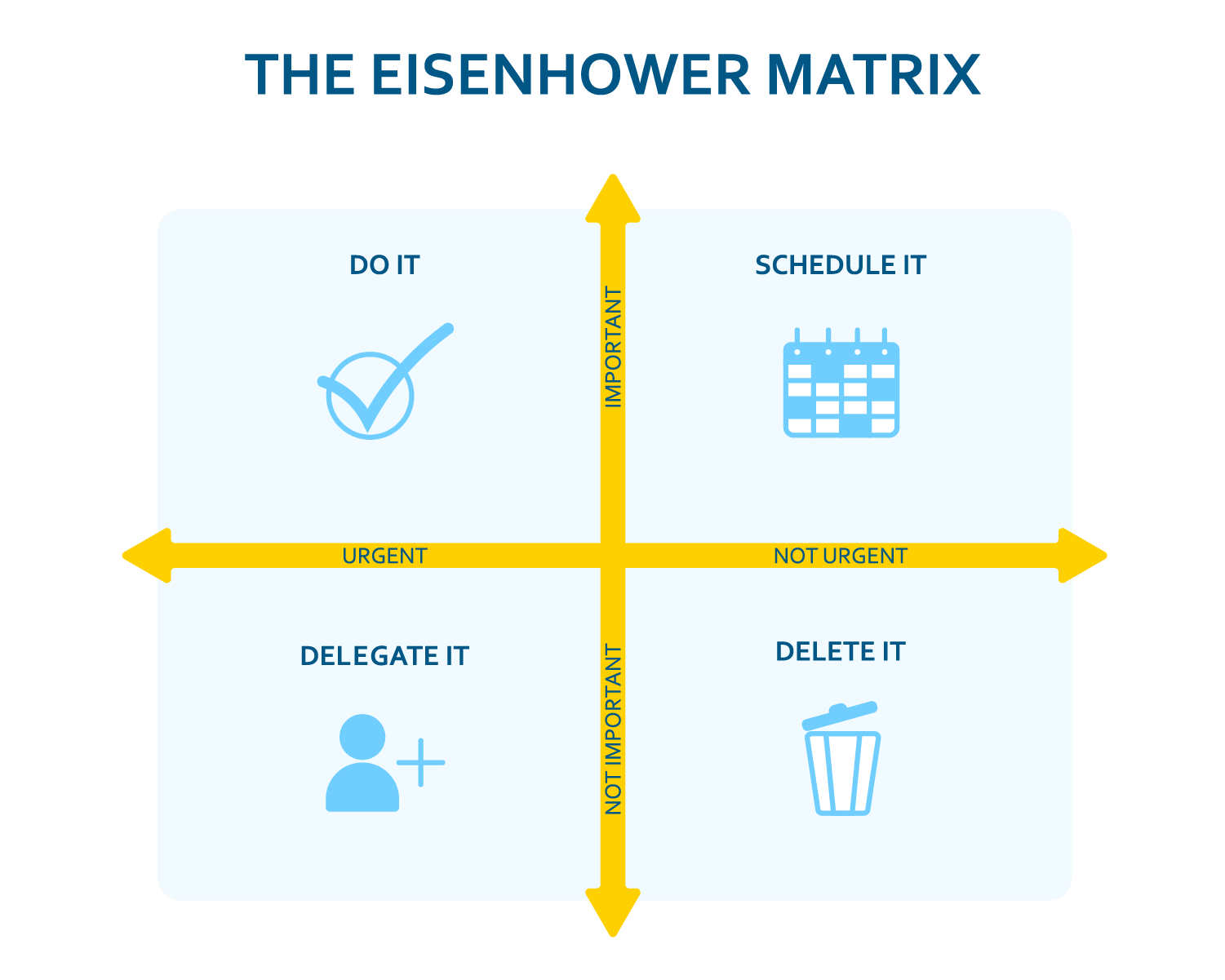We earn from qualifying purchases from Amazon Associate links.
- What is strategic quitting?
- Recognizing the need to shift paths
- How goals and KPIs indicate when to pivot
- The emotional and psychological weight of change
- Strategic decision-making frameworks
- Knowing who to limit or cut off
- Opportunities for intentional growth
- How to pivot well
- Life after choosing a new path
- Final wisdom for the hesitant
What is strategic quitting?
Strategic quitting isn’t about giving up. It’s about growth. In fact, it may be more helpful to see it as choosing a new path rather than quitting in the traditional sense.
Done right, it can be the deliberate, thoughtful process of exiting a role, relationship, habit, or commitment that no longer aligns with your values, goals, or well-being—your North Star.
Before making a move, conduct an energy audit to identify the things that primarily drain you versus those that energize you. Then, work through the draining items using the SAD framework:
- Stop what can be stopped.
- Automate recurring tasks
- Delegate what others can do (responsibly)
- ⚠️ Be careful with this one. You don’t want to shift tasks from your plate to someone else’s already full plate. This only shifts stress.
Even if you stay, this process helps reduce stress and clarify what’s worth your energy. Better yet, if you decide it’s time to shift gears, you have confidence that you gave it all you got.
Recognizing the need to shift paths
One of the hardest parts of change is knowing when it’s time. When something “looks good on paper” but feels off internally, that’s your cue to check in with yourself.
Determine if you’re in a tough season or a dead end
It’s critical to discern between a tough season and a dead end. Just because something is hard doesn’t mean it’s wrong. For example, a teacher may face a difficult class one year, but that doesn’t mean she’s in the wrong profession. Don’t call it a dead end too early.
Ask yourself:
- Am I constantly drained?
- Is my attitude slipping?
- Have I lost motivation?
If you answer yes to any of these questions, it’s worth digging deeper by talking to your key people. The ones who know you best will often see the signs before you’re willing to admit them. Watch how you show up at work and at home—your energy speaks louder than your words.

How goals and KPIs indicate when to pivot
Leadership isn’t just about people—it’s about outcomes that drive the business towards their North Star. A strong leader:
- Sets annual goals tied to company-wide objectives
- Defines clear KPIs to track progress
- Connects each team member’s work to those metrics
But good leaders also know when to stop. Not every project will work, and continuing a failing one wastes time, morale, and money. Avoid the trap of chasing dollars already poorly spent with even more investment—sunk cost shouldn’t determine your strategy.
Evaluate progress honestly, and have the difficult conversations as early as you can. Avoid “hope creep”—the slow, quiet belief that maybe things will magically turn around without a clear reason. Data-driven decisions and courageous leadership are what keep your team aligned, effective, and focused on what matters most.
Signs a project may be misaligned:
- It’s consistently missing KPIs with no upward trend
- You’ve pivoted more than once without traction
- The ROI is clearly negative (resources out > value in)
- It’s pulling focus from higher-impact work
If you’re seeing these signs, don’t wait. Document your findings then share it with your leader. How to do it:
- Show original goals vs. actual performance
- Outline what you’ve tried to course-correct
- Highlight the opportunity cost (what you’re not doing because of this)
- Recommend next steps: shut it down, pause, or re-scope
The emotional and psychological weight of change
People often feel guilt or shame around stopping what they’ve started. Why? Because we tie our value to our perseverance. We’re afraid of letting people down—our parents, our boss, our team. But here’s the truth: Your character doesn’t disappear just because you exit a role or stop a project.
Think of it like a retirement, not a failure. You’re stepping away to make room for what’s next.
👉 Try this: Before stopping what you’re doing, ask yourself:
- Is this doing harm?
- Is this task (or relationship) necessary?
- Is it important enough to risk my health?
If the answer to any of those is no, you can walk away—gracefully and with a plan.
When it’s time to walk away
This one hits home for me. My kids aren’t quitters, and that’s why my daughter’s athletic career comes to mind. She is an incredible athlete. In high school, she excelled in running, and just as she prepared to compete, 2020 hit. She didn’t throw in the towel when it would’ve been easy—she dug in.
She trained for 4-6 hours each day, and when she returned to the track, she won multiple competitions. Her success led to her securing a sports scholarship to college. My wife and I couldn’t have been more proud.
But an injury stood in her way of continuing with the sport later in college. Her biggest worry? That she’d let us down. But we couldn’t have been farther from that reality. We were so proud, and instead we took this opportunity to position this change as a retirement, not giving up.
My daughter considered how the injury that she sustained would impact her life and decided that it just wasn’t worth it. And from there, her retirement became something worth celebrating.
When you feel like you have to quit your job
It’s easy to go tunnel vision while considering a career change. Maybe you’re feeling under-appreciated, underpaid, like there’s no room to grow, or a toxic coworker is really testing your patience. No matter the reason, there are good things that come out of this.
Take Casey, for example. Casey had been with her company for years when a new director, Annie (also the owner’s wife), arrived. Initially, it seemed like a normal leadership transition. But Annie soon began undermining Casey, questioning her work and eventually firing her teammate, piling extra responsibilities on Casey.
Despite raising concerns directly and even going to HR, nothing changed. Eventually, Casey realized she had done all she could within that environment.
Her departure wasn’t rash. It wasn’t quitting. It was a strategic decision. She chose a new path that respected her values and protected her peace.
Benefits of choosing a new path
It’s easy to imagine a movie moment after putting in your notice: You find your dream job, work less, earn more, and live happily ever after. If we’re being honest, change is hard. But it can lead to unexpected (and realistic) upsides:
- If you were overworked:
- For them: Your departure may reveal the need for a more sustainable workload.
- For you: You can prioritize work-life balance in your next opportunity.
- If you were underpaid:
- For them: Leadership may reevaluate pay structures.
- For you: You now have a chance to seek a role that compensates you fairly.
- If you were unfulfilled:
- For them: They can bring in someone who truly thrives in that role.
- For you: You get to pursue something that aligns with your gifts and goals.
These benefits don’t happen overnight. But they become possible when you step into the unknown with clarity and courage.
Strategic decision-making frameworks
Strategic quitting requires strategic thinking. Start by sitting down and taking a real inventory:
- How is this role or relationship affecting your physical, emotional, and mental health?
- Are you able to produce your best work or show up fully?
- Are your resources being stretched unsustainably?
Then, make a pros and cons list. Factor in finances, coworkers, flexibility, and even your sanity. It’s not just about what you’ll lose—it’s about what you’ll gain.
Tools to help you gain clarity on your decision
If you’re still feeling unsure about your decision, you can use these tools to help you think more strategically about it.
- The 10/10/10 rule: How will I feel in 10 days? 10 months? 10 years?
- Eisenhower Matrix: What’s urgent? What’s important?
- Pros and cons list: Include mental health, flexibility, growth potential
You’ll find that these tools can nudge you in an unexpected direction. And yes, sometimes stopping something good is the only way to make space for something great.

Knowing who to limit or cut off
Sometimes, shifting course may mean setting new boundaries, not cutting ties entirely. But in some cases, distance or departure becomes necessary.
- Ask yourself: Where do I want to be? What’s my North Star?
- Assess your commitments monthly or quarterly. Which relationships align with your goals? Which ones drain you?
If people are not contributing to those things, you know what comes next—boundary or brick wall. This is hard work, but your peace and purpose are worth protecting.
How to handle a toxic coworker
If you’ve got a coworker who drops by to vent for 15 minutes a day, that’s a boundary issue, not just a time issue.
👉 Try this: Set clear expectations. Say, “I’m happy to listen, but let’s set a time for that.” Use scheduling as a boundary tool. Rather than cornering anyone, let the structure gently surface patterns.
In some cases—especially with toxic leaders or codependent relationships—you may need to document behavior, talk to HR, or simply walk away.
Toxic relationships at work that are left unaddressed leave you in the position to choose. Unfortunately, if a toxic colleague is unwilling to improve the working relationship, it might be time for you to go.
Opportunities for intentional growth
What if you don’t hate your job—but you’ve outgrown it? That’s a signal to grow with intention. Don’t wait for a new opportunity to fall in your lap. Initiate quarterly conversations with your boss. Ask: “Is there a place in this company where I can stretch and grow?”
Early in my consulting career, a boss once asked, “What do you want to do next year?” I said, “I want your job.” And every year, as the company grew, I moved up. Not because someone left—but because I was intentional about my path and ready when opportunity came.
Growth doesn’t always mean leaving. Sometimes it’s about stepping up, not stepping out. If you’re a leader or entrepreneur, the same applies to your business. Not all products, services, or strategies are meant to last forever. If something no longer aligns with your North Star, be courageous enough to move on.
How to pivot well
Navigating change with grace takes humility and honesty. It means being transparent with those around you and having the courage to say, “This is hard, but it’s right.” If you’re choosing to transition, do it thoughtfully:
- Document what you’ve built or overseen to leave a clear legacy.
- Communicate your decision with professionalism and clarity.
- Share your gratitude for the opportunities and relationships along the way.
- Leave doors open for future possibilities and avoid burning bridges.
Manage your expectations
Embrace that the next chapter might not be perfect right away. Career paths and life transitions rarely follow a straight line from Point A to Point B. Often, Point B is just a stepping stone to Point C. That’s part of growth, and it’s completely okay.
Do this before making a change
Sometimes, you don’t have the luxury to spend weeks considering a change. If you do, it’s worth your time to weigh the good and hard things that would come from this decision.
But not everyone can quit easily—financial realities or family needs may complicate things. Even if you can’t make a big leap right now, identifying misalignment can help you build a plan for when the time is right.
- Remember your North Star.
- Reflect on the pros and cons.
- Then bring trusted mentors into the conversation, if you can.
After you’ve spent time really considering things, through validation and reflection, you can move forward confidently.
Life after choosing a new path
I’ve lived this. Sure, the other side can feel scary, but if you’ve audited all the areas I’ve already talked about, then you can move forward with confidence.
When I moved into my coaching role at Bloom, I left a job I loved. I loved the team. I loved the owner. But it was time. Recently, I had a check-in with a client, and I was reminded why I made the move. I felt energized, aligned, and deeply fulfilled.
That’s the power of pivoting.
Being courageous enough to change my path has led to personal breakthroughs, professional growth, and deeper alignment with my purpose. And I’ve seen it happen for my clients too.
Final wisdom for the hesitant
You don’t have to quit to grow. But you do have to get honest about what’s not working. If you suspect pivoting might be the next right step, ask yourself:
- What’s my overall goal?
- Does this role/relationship/task align with it?
- Can I step forward without looking back?
Once you decide, trust yourself. Don’t live in the tension of constant second-guessing. You took the step for a reason.
And remember: Life is not just about work. Harmony comes from knowing your values, your goals, and your North Star. Work is just one variable. Your relationships, your faith, your health—they all matter. You don’t need to stay stuck to prove your worth. You only need to move forward with purpose.

Nick Becker
His cross-industry expertise and experience teaching at multiple academic levels underscore his dedication to team development and measurable business impact.
Grounded in a Midwestern work ethic shaped by early labor-intensive jobs and years of balancing full-time work with academic pursuits, he brings resilience and deep insight into the factors that drive business success. His consulting career has sharpened his ability to diagnose challenges and deliver strategic solutions that produce lasting results.
Outside of his professional work, he is committed to mentorship, coaching his seven children alongside his wife of 34 years. He also leads men’s retreats and support groups focused on fatherhood and life skills. Nick is known for offering empathetic, candid guidance that inspires clarity, unity, and meaningful transformation in both individuals and organizations.

